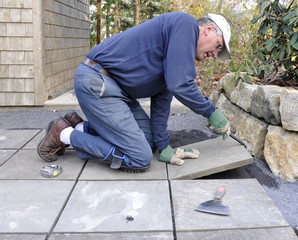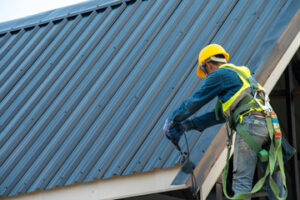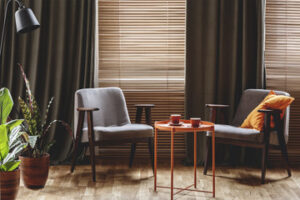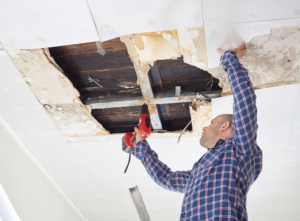Imagine this: you’re driving along a quiet road when you hear the distinct pop and hiss of a flat tire. With Emergency Roadside assistance, you can get help to change the tire and be back on your way in no time.

Most roadside emergencies are easy to avoid by having a well-stocked car emergency kit, maintaining your vehicle on a regular maintenance schedule, and educating your family about safe driving practices.
The tires on your vehicle are a critical link between you and the road. They carry the weight of your vehicle and keep you in control of your car. However, the unfortunate fact is that tire issues can arise at any time, usually when you least expect them. This makes knowing how to handle emergency situations such as a flat tire or jump start vital for keeping your car running smoothly and safely.
Luckily, there are many roadside assistance companies that offer emergency tire service. They operate 24 hours a day to ensure that they are available whenever you need them. The services they provide range from changing a flat to towing your vehicle to a repair shop. Depending on your car insurance, it is possible to add this coverage as an add-on or purchase it separately.
To reduce the likelihood that you will need to call for help, be sure to inspect your tires regularly. Keep an eye out for signs of damage such as cuts or bubbles. You can also check the pressure in your tires on a regular basis with a tire pressure gauge. This will help you keep your tires inflated to the recommended level, which can prevent them from going flat.
If you do get a flat tire while on the road, make sure to choose the safest spot to pull over. Ideally, it will be away from the roadway and in a well-lit area. It is a good idea to bring along a flashlight and some reflective materials such as safety cones or a battery-powered emergency flare. Using these will give other drivers a warning and prevent them from hitting your vehicle or coming too close to you.
Having the right tools in your emergency roadside kit can also make it easier for you to fix the issue yourself. Adding a pair of mechanic gloves to your kit will allow you to perform the task with ease while protecting your hands from dirty or greasy materials. Many of these types of gloves also come with a head lamp, which can be useful for working in the dark or on rainy days.
Battery
A battery stores chemical potential energy and releases it as electrical current. They come in many different shapes and sizes from miniature cells powering hearing aids to, at the other extreme, huge batteries the size of rooms that provide standby and emergency power for telephone exchanges and computer data centers. Batteries have much lower specific energy (the amount of energy they contain per unit mass) than common fuels like gasoline, but their higher efficiency in converting electrical to mechanical work allows them to provide more power for the same weight and volume.
In a car, the battery is the source of electrical power used to run the engine and accessories. A dead battery is one of the top two breakdowns that cause people to call roadside assistance. If your car battery is bad, you can use jumper cables to re-charge it, but the best way to avoid this kind of emergency is to keep a secondary battery in your vehicle.
If you’re going to carry a spare, you’ll want heavy-duty (two- or four-gauge) jumper cables. These are long enough to allow you to “jump start” another vehicle without having to place the cars front-to-front or side-by-side, but they’re also short enough to make them easy to store in a trunk or fender well. You can even find portable jumper batteries that feature a lamp to illuminate nighttime tire changes and jumps.
When a battery is overcharged, the reactions at the electrodes produce hydrogen gas. This can ignite explosively if the air is exposed to it, such as when disconnecting a jumper cable. Most of the time, however, the hydrogen is released slowly and dissipates within the battery.
PNNL is working to develop next-generation batteries that can play a critical role in a clean, reliable, resilient electric grid and a decarbonized transportation system. This work includes testing new battery chemistries, creating models to optimize their performance, and developing strategies for how they can be deployed safely and cost-effectively in the real world. These kinds of batteries can help store electricity from renewable sources, and then release it when it’s needed most – such as during a power outage or natural disaster.
Lockout
The goal of a lockout is to prevent hazardous energy from being released inadvertently or accidentally. This is accomplished by disconnecting and isolating the system from a source of power. This process must be done before anyone enters the work area to perform maintenance or repairs. When an authorized person returns to the machine, a procedure must be followed to verify that de-energization has taken place and that the system cannot start up without the authorized worker’s knowledge.
Ideally, a written procedure should be developed for each piece of equipment that requires a lockout. This can be a simple checklist or more comprehensive document that includes information such as the purpose of the lockout (repair, maintenance, etc.), the date, and who applied the lock and tag. The procedures should also indicate the name of the authorized person who is allowed to remove the lock and tag. The document should be reviewed and signed by the authorized worker to ensure they understand how to safely perform the task at hand.
In addition to preparing written procedures, companies should develop and maintain a comprehensive lockout tagout program. This includes drafting and reviewing procedures, identifying the employees, machines, and equipment covered by the procedures, providing appropriate tools and hardware to control hazardous energy, and training authorized personnel. The program should also include a recordkeeping component to track lockout and tagout activity.
When a situation occurs where a worker becomes locked out, they should follow company procedure and contact a supervisor or other authorized representative to request assistance. In some cases, the employee may need to provide a detailed description of the problem and where it is located. It is important that these incidents are documented so that supervisors can track the progress of a lockout and determine whether additional training is needed.
Car lockouts can be stressful, especially when they occur in unfamiliar locations. While it is critical to stay calm and assess the situation, it is also important to prioritize personal safety. When waiting for roadside assistance, it is a good idea to move away from the vehicle and into a safe location. This can help to avoid any unnecessary stress and potential harm from criminals or other thugs that may be lurking in the area.
Fuel
For some, running out of gas is a common problem and one that can be easily remedied by calling for roadside assistance. This type of service typically provides a quick solution for motorists who run out of fuel by dispatching a fuel delivery vehicle to their location. This eliminates the need for motorists to travel long distances to refuel, saving them time and money. Roadside fuel delivery services are often offered by towing companies, auto clubs, and specialized roadside assistance providers.
In addition to helping individuals and businesses get back on the road, emergency fueling services can be a lifeline during natural disasters or other urgent situations. For example, during hurricanes or floods, damaged infrastructure can disrupt fuel supply and lead to a shortage of fuel in affected areas. Emergency fueling services provide a fast and targeted response, bridging fuel supply gaps and keeping operations running smoothly.
When you need to refuel your car, you can request help by using an app or simply calling your roadside assistance provider. Once you’ve provided the requested information, the service will usually send a technician to your location with the correct fuel type for your vehicle. Once the technician arrives, they’ll refuel your vehicle and provide you with a receipt for the payment.
Many emergency fuel services also offer a variety of different types of fuel, including gasoline, off-road diesel, and even diesel exhaust fluid (DEF). Depending on your needs, you can select the fuel that’s most appropriate for your situation. Some service providers are able to provide fuel for a wide range of vehicles, including trucks, buses, and passenger cars.
Getting stuck with an empty tank of gas can be frustrating and inconvenient. To avoid running out of fuel, be mindful of your vehicle’s fuel consumption and keep track of how much you use. You can also refuel more frequently to prevent your tank from getting too low. Lastly, consider signing up for a roadside assistance plan that includes fuel delivery. It’s worth it to pay a small membership fee to save on expensive towing bills and get the peace of mind that comes with knowing that you have access to emergency fueling.








